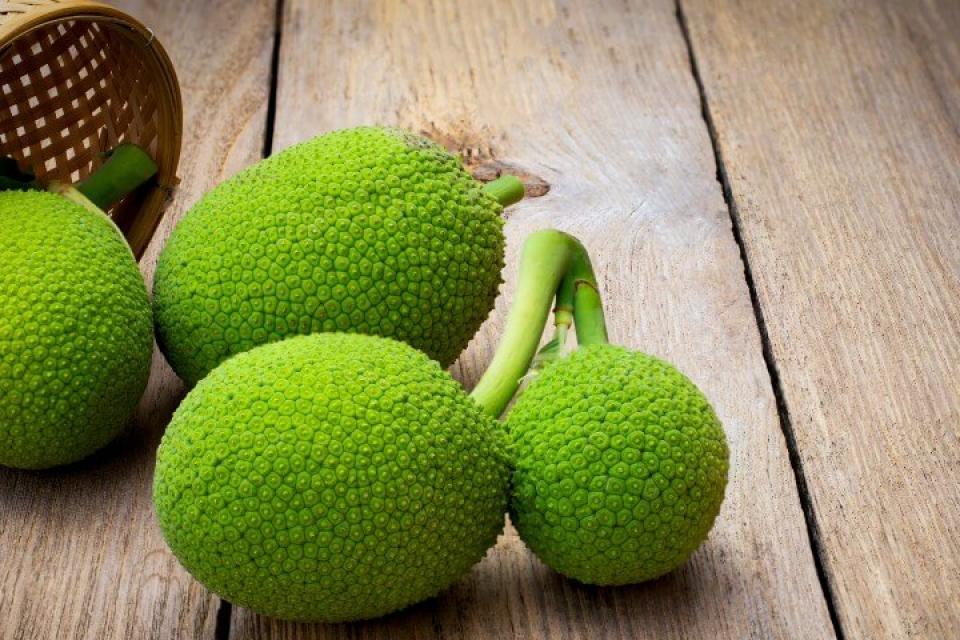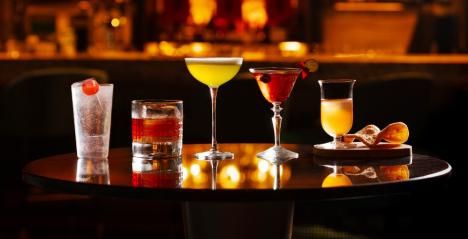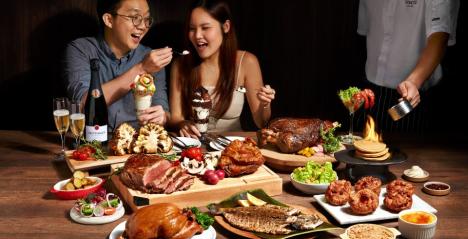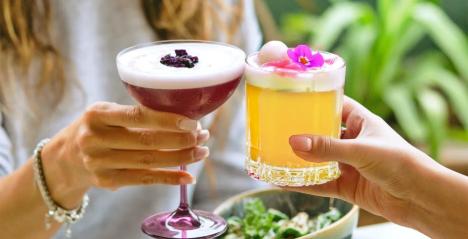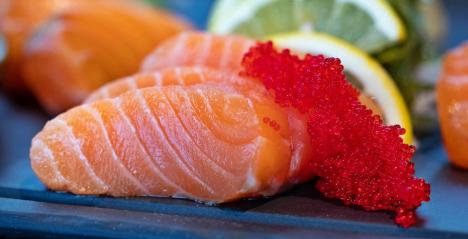When I was rambling in the old Choa Chu Kang, I came across this beautiful grove of trees with its distinctive leaves. This tree is popularly planted in the old kampungs (villages) and the Malays called it Buah Sukun (Sukun Feuit).
These days you can hardly find it for sale anymore in Singapore except in the GIANT mega-mart or in the wet market stalls of Geylang Serai.
The breadfruit originated by chance as a seedless breadnut, and is perpetuated from root cuttings. The tree can grow to a height of about 20 meters, has dark green leaves with light green coloured fruits. The breadfruit can weigh up to 2 kg and is generally spherical with a smooth green skin that turns a pale yellow when ripe.
The moist flesh, which is of solid mass, is boiled or baked before consumption. Baked breadfruit resembles the crumb of a new loaf of bread, hence its name, although the fruit is said to taste more like yam and roasted potatoes. The fruit is rich in starch and is eaten boiled, roasted, fried in slices or cooked as a stew or soup. In Asia, breadfruit is usually treated as a vegetable and picked before it is ripe to be used in cooking.
The flesh is often cut into chunks and parboiled before being added to coconut milk and other seasonings to make a curry-like dish. Breadfruit can also be cut into very thin slices for deep frying and flavoured with salt, chilli powder or sugar syrup. In some of the stalls that sells fried banana fritters in Singapore, you may occasionally come across one that sells slices of fried breadfruit fritters too
Breadfruit had always been part and parcel of South Pacific legends. Evolving in Indonesia’s Sunda Archipelago, it has become a staple diet for islanders throughout the tropical Pacific islands. The fibrous inner bark of the tree is used to make cloth and the lightweight wood which is resistant to termites and shipworms, is used as timber for structures and outrigger canoes.
In the South Seas, glue and caulking material are obtained from the sap. Native Hawaiians used its sticky latex to trap birds, whose feathers were made into cloaks. Its wood pulp can also be used to make paper, called breadfruit tapa. It is also used in traditional medicine to treat illnesses that range from sore eyes to sciatica.
To the Polynesians, the breadfruit and banana were vitally important. The threat of cyclones, droughts and the total destruction of crops by enemies were a constant danger to their existence. Total destruction of crops was the second greatest victory over one’s enemies in Polynesian society - the greatest was to obtain the foe’s “mana” by eating him.
These pressures led to the development of food preservation technique which were applied to the breadfruit and bananas. Fruits were peeled and wrapped in air-tight parcels using heliconia and then banana leaves. These are then placed in a leaf-lined pit where they ferment over several weeks and produce a sour, sticky paste. So stored, the product may last a year or more, and some pits are reported to have produced edible contents more than 20 years later. Fermented breadfruit mash goes by many names such as mahr, ma, masi, furo, and bwiru, among others.
Do you know, in 1787, the British Government commissioned Captain Bligh of the ship “Bounty” to transport 1000 seedlings of the breadfruit from Tahiti to the British West Indies. In the excitement to transport these seedlings within a short period of time, the overworked sailors committed the famous Mutiny on the Bounty.
Do you have a BreadFruit Tree in your neighbourhood?

